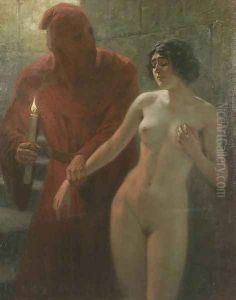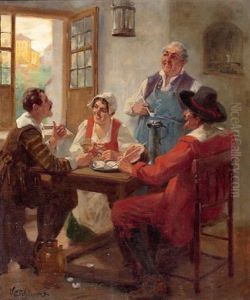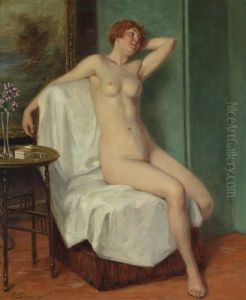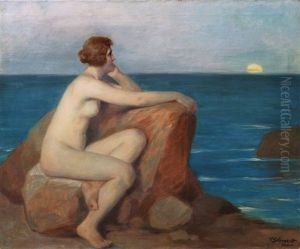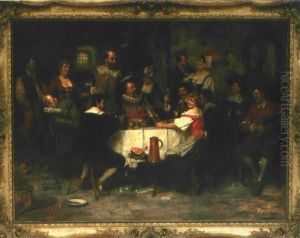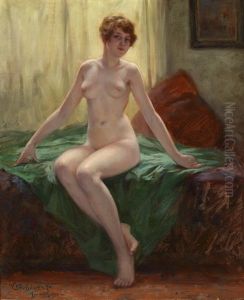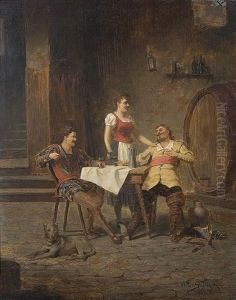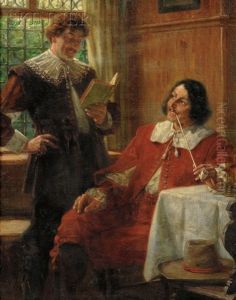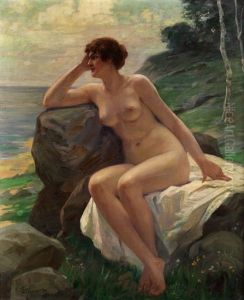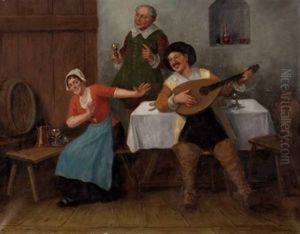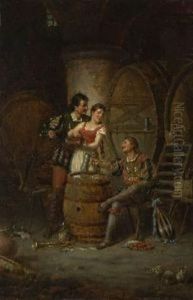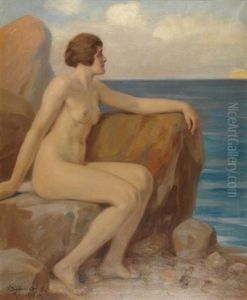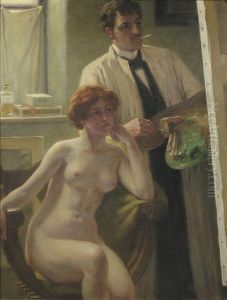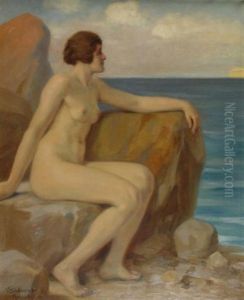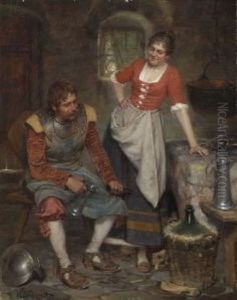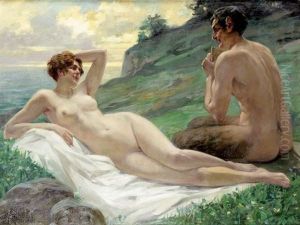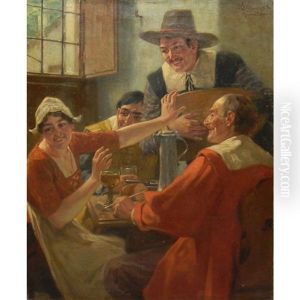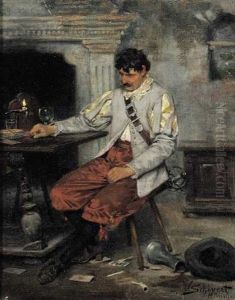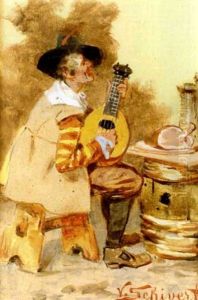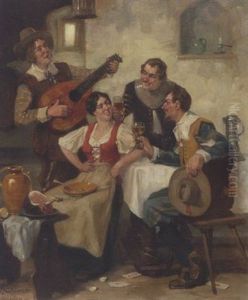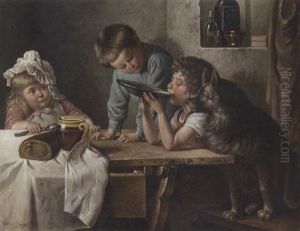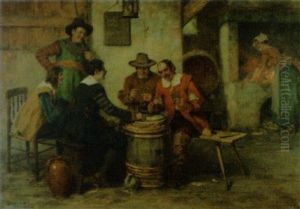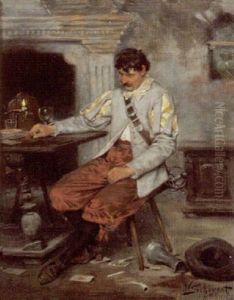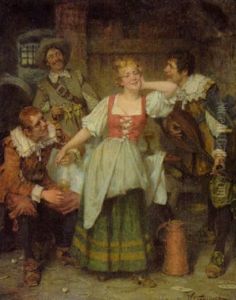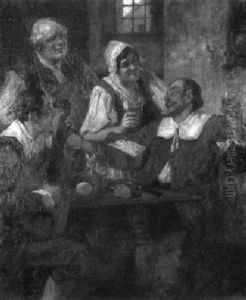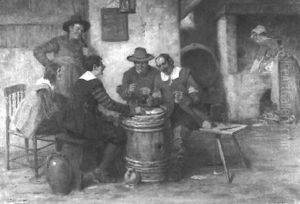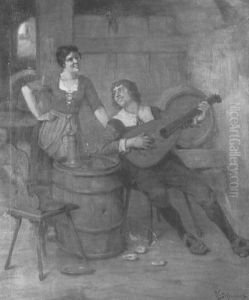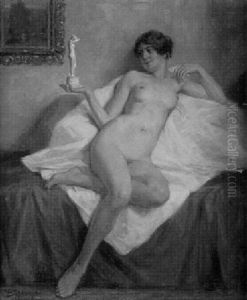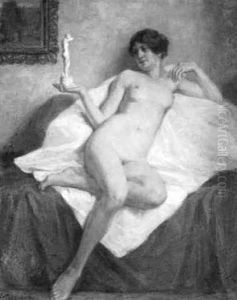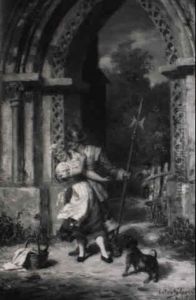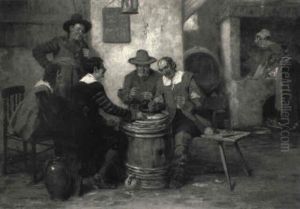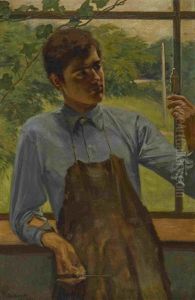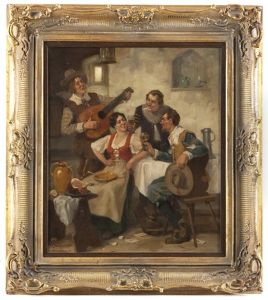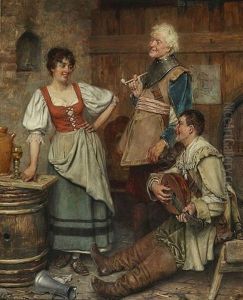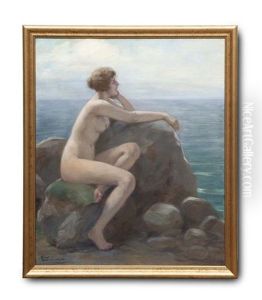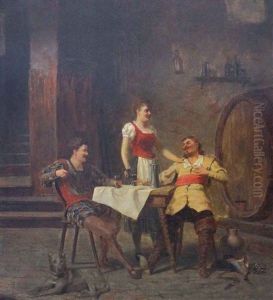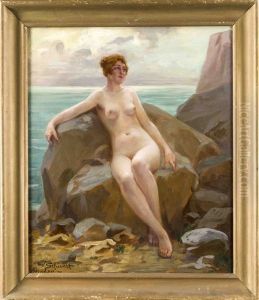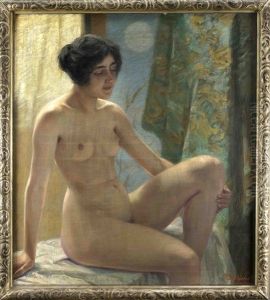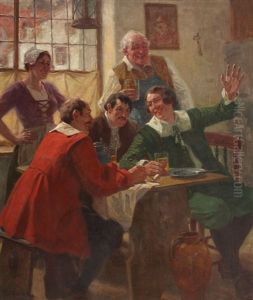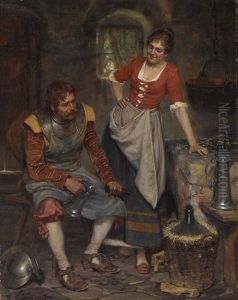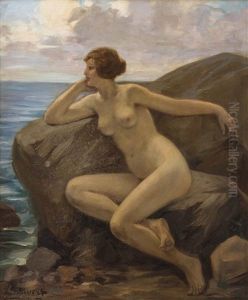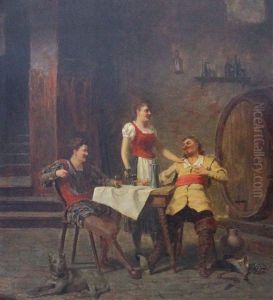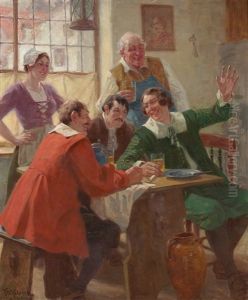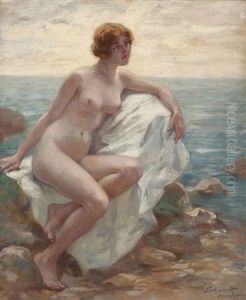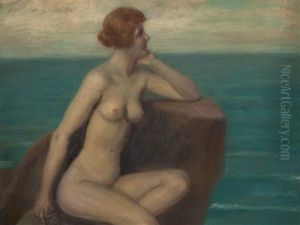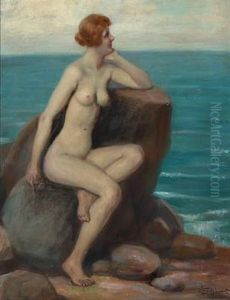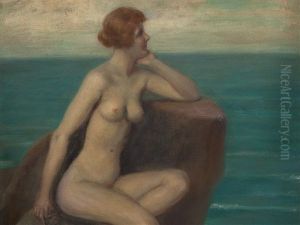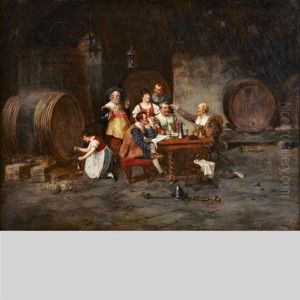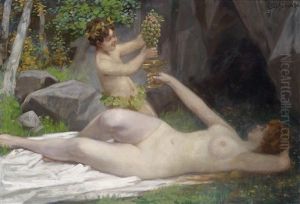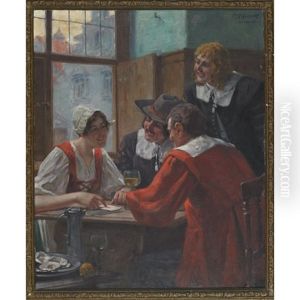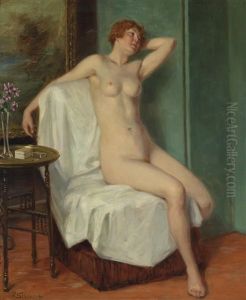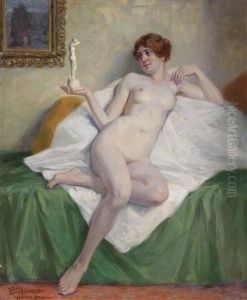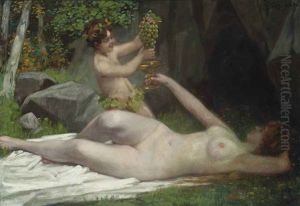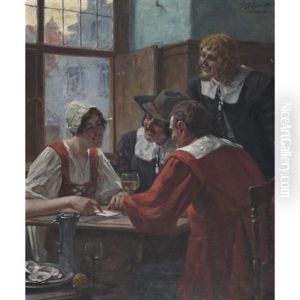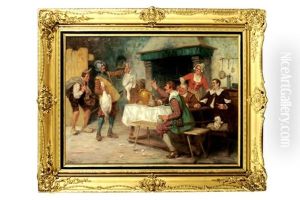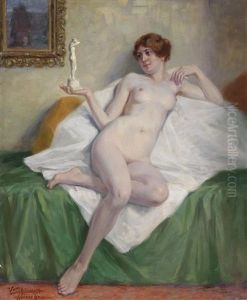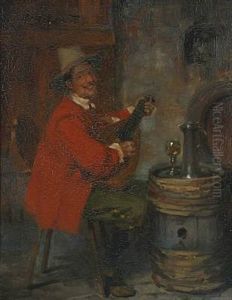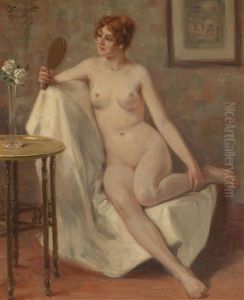Victor Schivert Paintings
Victor Schivert was a Romanian-born artist whose work spanned the late 19th and early 20th centuries. Born in Bucharest, Romania, in 1863, Schivert is known for his detailed genre paintings, portraits, and landscapes, which often depicted scenes from Romanian and European history, as well as daily life in a style that combined realism with a romantic sensibility. His artistic talents were recognized early, and he pursued formal art education in Western Europe, which was a common path for many Eastern European artists of his time seeking to refine their skills and gain exposure to the broader art movements of the period.
Schivert's body of work reflects the influence of his travels and education abroad, particularly in Germany and France, where he absorbed elements of the Romantic and Realist movements, integrating them into his own unique style. He was particularly adept at capturing the nuances of light and shadow, which added a dramatic quality to his historical and genre scenes. His paintings often featured elaborate historical costumes and settings, meticulously researched to ensure accuracy, which made them popular among patrons interested in the romanticized past.
Despite his success and recognition in various European art circles, Victor Schivert remained deeply connected to his Romanian roots, and his works frequently celebrated Romanian cultural heritage and landscapes. His paintings of Romanian peasants, rural landscapes, and historical figures contributed to the national romantic movement in Romanian art, which sought to define a unique national identity through the visual arts.
Schivert's contribution to art was not limited to his paintings. He was also involved in the artistic community as a teacher and mentor, influencing a new generation of artists. His works were exhibited widely during his lifetime, including exhibitions in Romania, Germany, and France, which helped to establish his reputation beyond his native country.
Victor Schivert passed away in 1926, leaving behind a legacy that continues to be appreciated for its contribution to Romanian and European art history. His works are preserved in several art museums and private collections across Europe, where they continue to be studied and admired for their artistic and historical significance. Although not as widely known today as some of his contemporaries, Schivert's art remains an important example of the cross-cultural exchanges that enriched European art at the turn of the 20th century.
